Click on images to enlarge
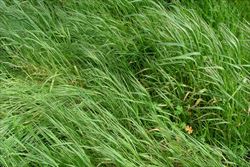
dense infestation (Photo: Sheldon Navie)
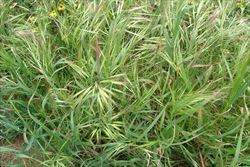
habit (Photo: Sheldon Navie)
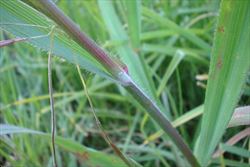
stem and leaf bases (Photo: Sheldon Navie)
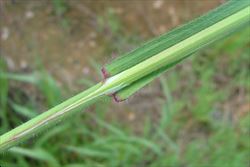
close-up of stem, ligule and leaf sheath (Photo: Sheldon Navie)
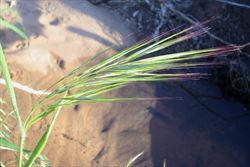
young seed-head (Photo: Sheldon Navie)
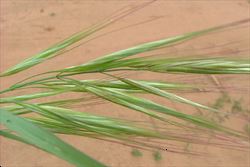
young flower spikelets (Photo: Sheldon Navie)
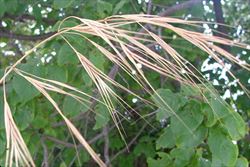
mature flower spikelets (Photo: Sheldon Navie)
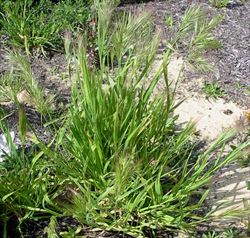
habit of the form sometimes regarded as a separate species (i.e. Bromus rigidus), with more upright and denser flower clusters (Photo: Sheldon Navie)
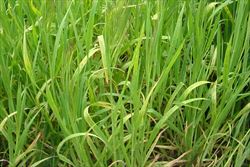
leaves (Photo: Sheldon Navie)
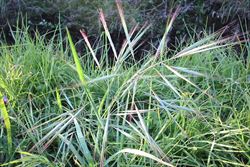
relatively loose, drooping, seed-head (Photo: Sheldon Navie)
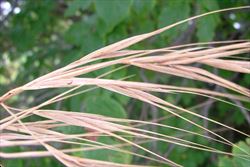
close-up of mature flower spikelets (Photo: Sheldon Navie)
Scientific Name
Bromus diandrus Roth
Synonyms
Anisantha diandra (Roth) Tutin ex Tzvelev
Bromus diandrus Roth var. diandrus
Bromus diandrus Roth var. rigidus (Roth) Sales
Bromus gussonii Parl.
Bromus rigidus Roth
Family
Gramineae (South Australia)
Poaceae (Queensland, New South Wales, the ACT, Victoria, Tasmania, Western Australia and the Northern Territory)
Common Names
brome grass, broncho grass, giant brome, great brome, jabbers, Kingston grass, ripgut, ripgut brome, ripgut grass, slands grass, wild oat
Origin
Native to Europe (i.e. Hungary, Greece, Italy, Romania, Yugoslavia, France, Portugal and Spain), the Azores, the Madeira Islands, the Canary Islands, northern Africa (i.e. northern Algeria, northern Libya, Morocco and Tunisia) and western Asia.
Naturalised Distribution
Widely naturalised in southern Australia (i.e. in south-eastern Queensland, throughout New South Wales and Victoria, in the ACT and Tasmania, in larger parts of South Australia, in the southern parts of the Northern Territory, and in the southern and western parts of Western Australia). Also naturalised on Lord Howe Island and Norfolk Island, and in other parts of the world.
Notes
This species is regarded as an environmental weed in Victoria, South Australia and Western Australia. It is a common weed of pastures, crops and disturbed sites, but also grows in native grasslands, woodlands, coastal sites, on offshore islands and in damp sites near creeks and wetlands. It is listed as one of the top ten environmental weeds of coastal environs in the Gascoyne region of Western Australia and is also a common coastal weed in the Gulf St. Vincent area in South Australia. Great brome (Bromus diandrus) is also listed as a weed of wetlands and waterways in the southern regions of Western Australia. It often invades conservations areas (e.g. Phillip Island Nature Park in Victoria, Don River Reserve in Tasmania and Cobbler Creek Recreation Park in South Australia) and is regarded as a very serious threat to plant communities in the Goulburn Broken Catchment in Victoria.
Note: there is significant variation in this species and two varieties (i.e. var. diandrus and var. rigidus) or two separate species (i.e. Bromus diandrus and Bromus rigidus) are sometimes recognised.

